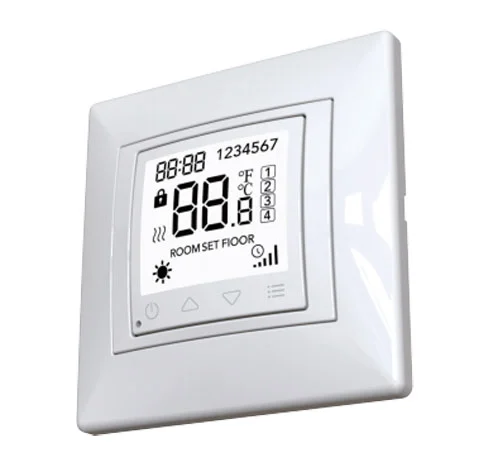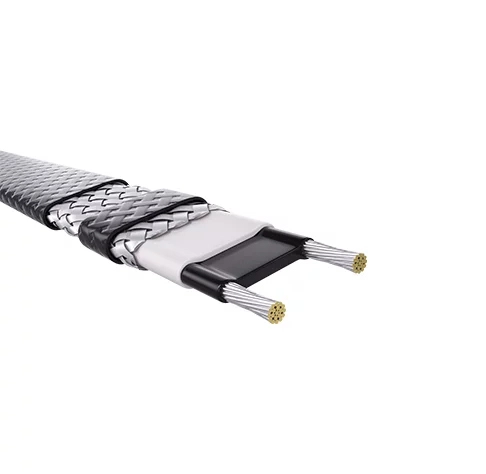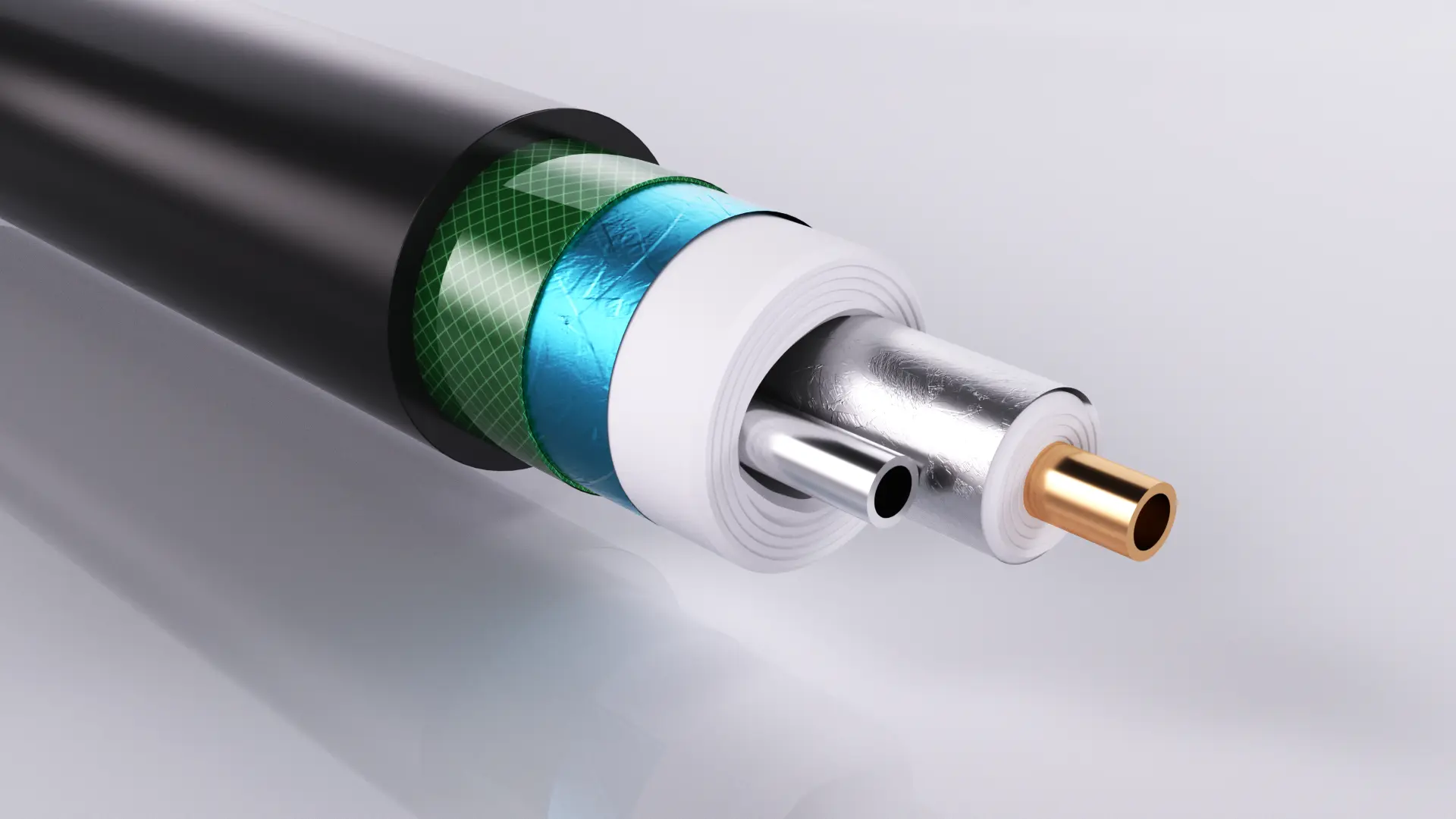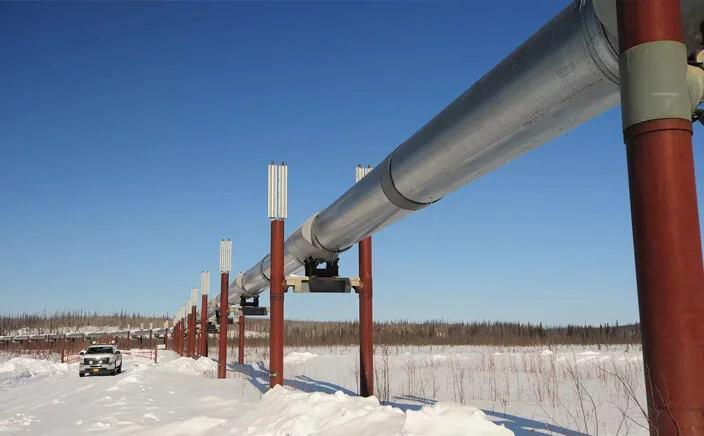Rubber heated snow melting mats and electric tracing tapes both possess heating functions, but they exhibit significant differences in their application scenarios, structural principles, and performance characteristics. The following is a detailed comparison of both:
Definition and Application
Name | Definition | Application |
Rubber Heated Snow Melting Mat | A snow melting product designed specifically to address the problem of snow accumulation on roads during winter. It is usually made of rubber material, with embedded heating wires, insulation layers, etc. | Used in roads, bridges, parking lots, sidewalks, and other areas that require snow melting to enhance road capacity and safety |
Electric Tracing Tape | Composed of heating elements (such as metal resistance wires), generating heat through the flow of current in the heating element when connected to a power source, thereby conducting heat to the object needing heat tracing | Widely used for the antifreeze insulation of pipes and tanks, maintaining process temperatures, heating highways, ramps, sidewalks, etc. Additionally used for auxiliary heating of air conditioning compressors, motors, submersible pumps, and thermal insulation of battery packs |
Structure and Principle
Name | Structure | Principle |
Rubber Heated Snow Melting Mat | Rubber raw materials, heating wires, insulation layers, aramid yarn, heat shrink tubing, etc. | When powered, the heating wire generates heat to increase the surface temperature of the rubber mat, thereby accelerating the melting of accumulated snow |
Electric Tracing Tape | Metal conductor wires, polymer heating materials, shielding layer, insulation layer, and outer sheath, etc. | Utilizes electrical energy converted to thermal energy, generating heat through the heating element to replenish the heat lost by the heat-traced object |
Performance and Features
Name | Advantages | Disadvantages |
Rubber Heated Snow Melting Mat | Efficient snow melting: Rapidly generates heat to effectively melt road snow, thereby improving road capacity and safety, significantly reducing the workload of manual snow removal Energy-saving and environmentally friendly: Compared to traditional snow melting methods (such as salting, snow plowing), rubber heated snow melting mats have a higher energy efficiency ratio, reducing energy consumption. It also avoids the potential pollution caused by using chemicals, making it more environmentally friendly Safe and reliable: Rubber heated snow melting mats use professional electrical design and safety protection measures to ensure safety during use. The surface material has good wear resistance and slip resistance, reducing the risk of traffic accidents caused by snow accumulation Easy to install and maintain: The installation of rubber heated snow melting mats is simple and quick, just lay them on the road surface that needs snow melting
| High cost: The initial investment cost of rubber heated snow melting mats is relatively high, which may impose economic pressures on regions or projects with limited budgets. Energy consumption issues: Despite having a high energy efficiency ratio, rubber heated snow melting mats still consume a certain amount of electricity when used continuously for long periods. Maintenance requirements: Although the maintenance cost of rubber heated snow melting mats is relatively low, periodic inspection and maintenance are required to ensure their proper operation. This includes checking electrical connections, heating elements, and the wear of surface materials.
|
Electric Heat Tracing Tape | Energy-saving and environmentally friendly: High energy conversion efficiency, capable of converting most electrical energy to heat energy, reducing energy waste. Additionally, it does not produce harmful substances or exhaust emissions during use, meeting environmental requirements. Safe and reliable: Made of special materials, with good waterproof, moisture-proof, and corrosion-resistant properties Highly adaptable: Suitable for various shapes and sizes of pipes and building rooftops with snow accumulation. Whether in straight sections or curved sections, bridges or tunnels, it can be flexibly applied. Moreover, it can monitor road conditions in real-time through a remote monitoring system.
| High dependence on electricity: The normal operation of electric tracing tape completely relies on power supply. If a power outage occurs during snow melting, the system will be unable to work, leading to an inability to melt snow in a timely manner. Restricted usage range: The heating power and length of electric tracing tape are limited. For large-scale, long-distance snow melting needs, multiple heat tracing devices may need to be combined, increasing the system's complexity and cost. Limited lifespan: Over long-term use, electric tracing tape may experience aging, damage, and other issues, affecting its heating performance and safety, necessitating periodic replacement.
|
Conclusion
Rubber heated snow melting mats and electric tracing tapes both have heating functions, but they differ greatly in application scenarios, structural principles, and performance characteristics. Rubber heated snow melting mats are more focused on solving road snow accumulation problems in winter, while electric tracing tapes are more broadly used in various heating and insulation scenarios. Therefore, in choosing which product to use, consideration must be given to the specific application scenarios and needs.







